What's New
Displaying results 3321 - 3330 of 4914
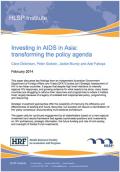
Resource | Publications,
This paper discusses key findings from an independent Australian Government Department of Foreign Affairs and Trade (DFAT)-funded joint Strategic Assessment of HIV in ten Asian countries. It argues that despite high level intentions to intensify regional HIV responses, and growing evidence for what needs to be done, many Asian countries are struggling to refocus their resources and programmes to where it matters most, largely because of a legacy of outdated and inappropriate policy, programming and resourcing.
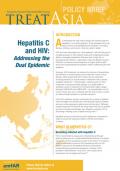
Resource | Publications,
HCV has been described as a “dual epidemic” with HIV because it is highly prevalent in HIV-endemic areas and it disproportionately affects vulnerable populations that also have a high risk of developing HIV infection—especially in Asia and Eastern Europe. HIV/HCV co-infection has emerged as an urgent public health issue that is jeopardizing the progress made in addressing the HIV epidemic.

Resource | Presentations,
Presentation presented at WPATH International global perspectives meeting
Dates : 14 Feb 2014 - 18 Feb 2014
Place : Anantara Riverside, Bangkok, Thailand
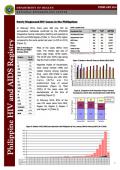
Resource | Fact Sheets,
In February 2014, there were 486 new HIV Ab sero-positive individuals confirmed by the STD/AIDS Cooperative Central Laboratory (SACCL) and reported to the HIV and AIDS Registry (Table 1). This is 43% higher compared to the same period last year (n=339 in 2013) [Figure 1].

Resource | Presentations,
Presentation presented at WPATH International global perspectives meeting
Dates : 14 Feb 2014 - 18 Feb 2014
Place : Anantara Riverside, Bangkok, Thailand
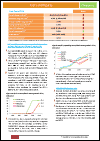
Resource | Reviews and Snapshots,
Typical of the pattern seen elsewhere in Asia, the epidemic in Philippines began with explosive growth of HIV among people who inject drugs (PWID); in Cebu, HIV prevalence in male PWID increased from 0.8% in 2005 to 52.4% in 2013. Recent surveillance indicates that HIV is spreading from Cebu to the neighbouring city of Mandaue, where prevalence has increased from 0% in 2009 to 42.3% in 2013 (IHBSS 2005 to 2013).

Resource | Publications,
Transgender people in Asia and the Pacific face many challenges in claiming their rights in general, and specifically their right to health care. Through capacity building the transgender community can be empowered to promote transgender-positive attitudes and advocate for competent, comprehensive and accessible health services.
In order to identify priority actions for the health and rights of transgender people in Asia and the Pacific, the Agenda in Transition regional community consultation was held in Bangkok, Thailand, on 19-20 February 2014. This event brought together diverse members of the transgender community; UN agencies, civil society organizations, donors and other partners to review the current situation for the region’s transgender people and determine those needs, which require accelerated action.

Resource | Publications,
The framework for sustainable development in the 21th century must maximize healthy wellbeing at all ages through universal coverage and pro-health policies in all sectors. Adopting a life course approach that will benefit all persons, we recommend the health goal Achieve Health and Wellbeing at All Ages.
To accomplish this objective we propose that all countries achieve universal health coverage at every stage of life, with particular emphasis on primary health services, including mental and reproductive health, to ensure that all people receive quality health services without suffering financial hardship. Countries implement policies to create enabling social and environmental conditions that promote the health of populations and help individuals make healthy and sustainable decisions related to their daily living.
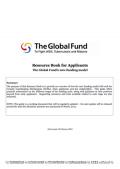
Resource | Guidelines,
The purpose of this resource book is to provide an overview of how the new funding model will work for Country Coordinating Mechanisms (CCMs), other applicants and key stakeholders. This guide offers practical information on the different stages of the funding cycle, along with guidance on best practices learned from early applicants. Supporting resources and tools available related to each stage are also indicated.






